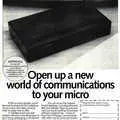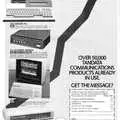Tandata Advert - December 1984
From Personal Computer World
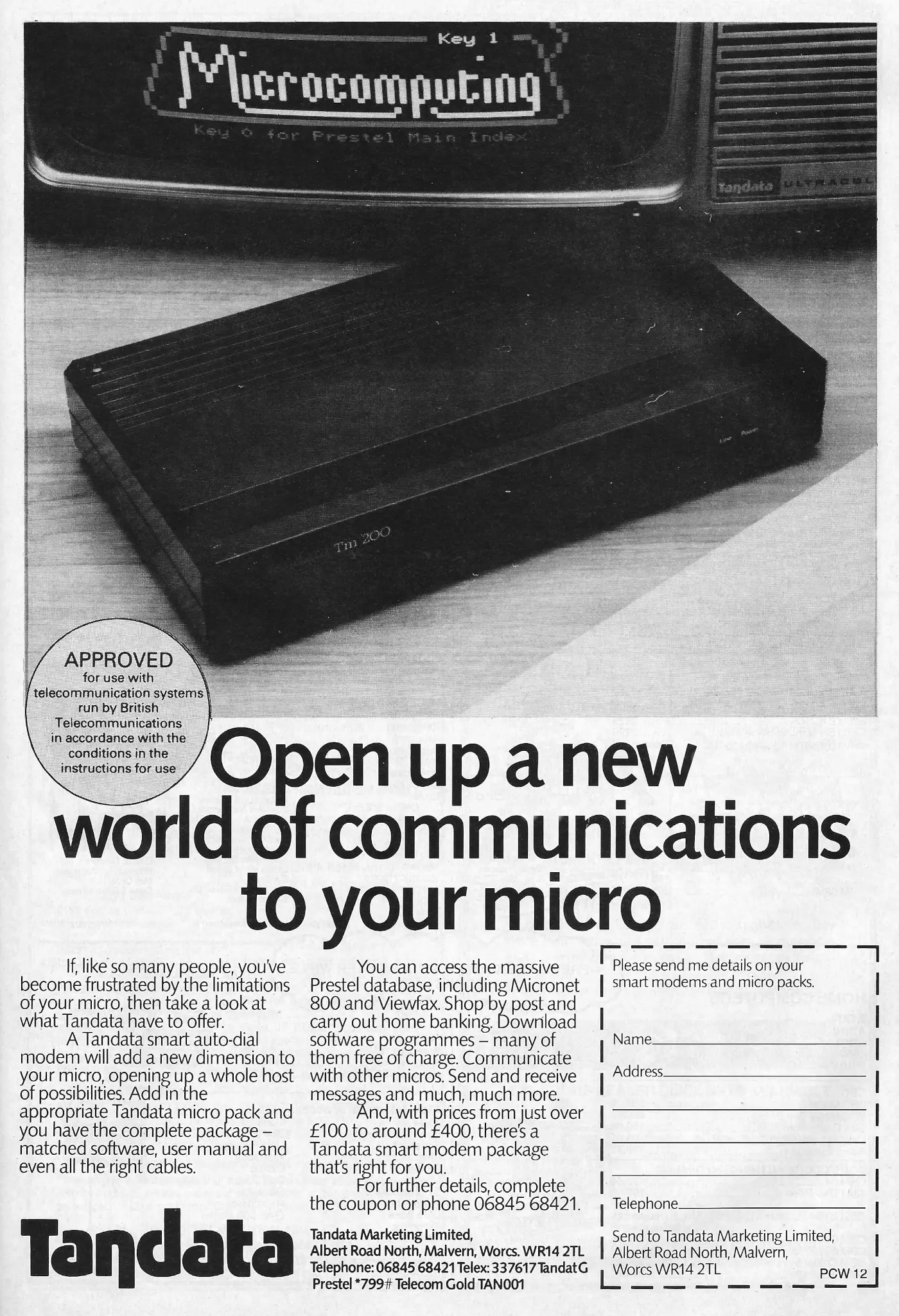
Tandata Tm 200: Open up a new world of communications to your micro
Tandata Design Consultants formed out of Tangerine, the makers of the Microtan 65, as a designer and manufacturer of modems and communications equipment. The top end of Tandata's modem range sold for around £400 - that's about £1,680 in 2025 money.
By the spring of 1984, the company had publicly floated, with the new company Tandata Holdings PLC set up to include subsidiaries Tandata Marketing Limited - initially of Albert Road North, Malvern in Worcesester, before ending up in Hatton Garden, London - and, presumably, Tandata Design Consultants in some form.
Both Tandata and Tangerine are related to Oric, which was formed by Tangerine's technical director Paul Johnson and included Tandata's former managing director Peter Harding. For a while, the Oric was sold as "Oric 1 - created by Tangerine". It was sometimes said that "all the honest people from Tangerine went to Tandata and everyone else formed Oric"[1].
A few months before, at the beginning of 1984, Tandata had something of a coup when it secured a deal with Prestel to build an adapter for the UK's first home banking service - Homelink - launched as a collaboration between the Nottingham Building Society (NBS) and the Royal Bank Of Scotland.
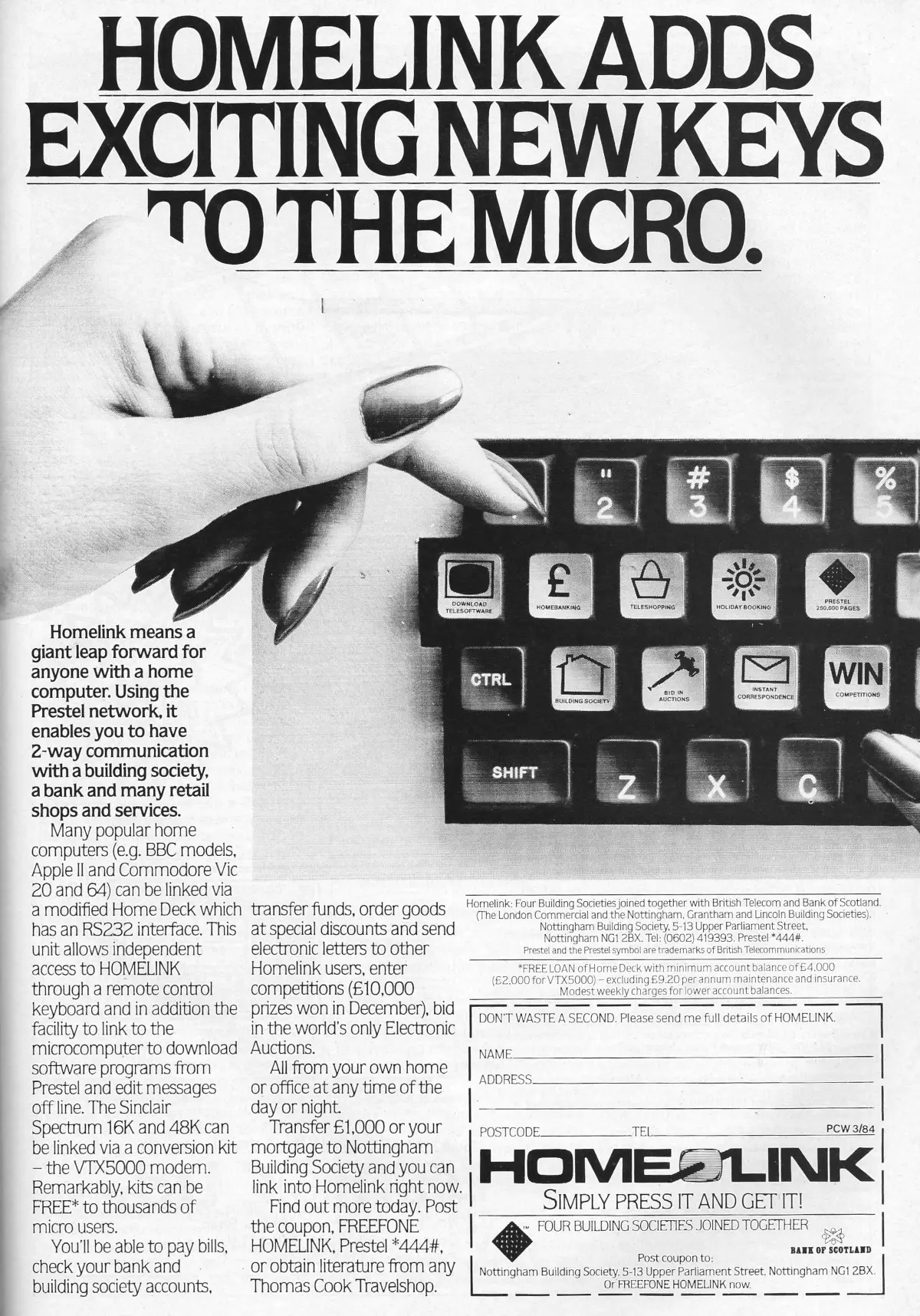
An advert for Homelink - the joint venture between Nottingham Building Society and the Bank of Scotland. From Personal Computer World, March 1984
Tandata didn't at the time have a suitable product, but it had previously produced the first "alphanumeric" Prestel adapter - the Alpha Tantel.
John Webster, MD of RBS said "Tandata showed a refreshing and innovative approach to our requirements for a full alpha keyboard and infra-red remote control. The product was targeted at Mr and Mrs. Everyman, not at computer buffs".
Tandata's specification for the adapter was enough to secure the gig, which led to the TD1400 "Homedeck". This ran a Rockwell 6500-11 CPU, a TI TCX-3101J modem and a Mullard 9735 "combined video and oscillator chip". The Rockwell CPU was actually a masked version of the venerable 6502, with ROM and RAM on the same chip.
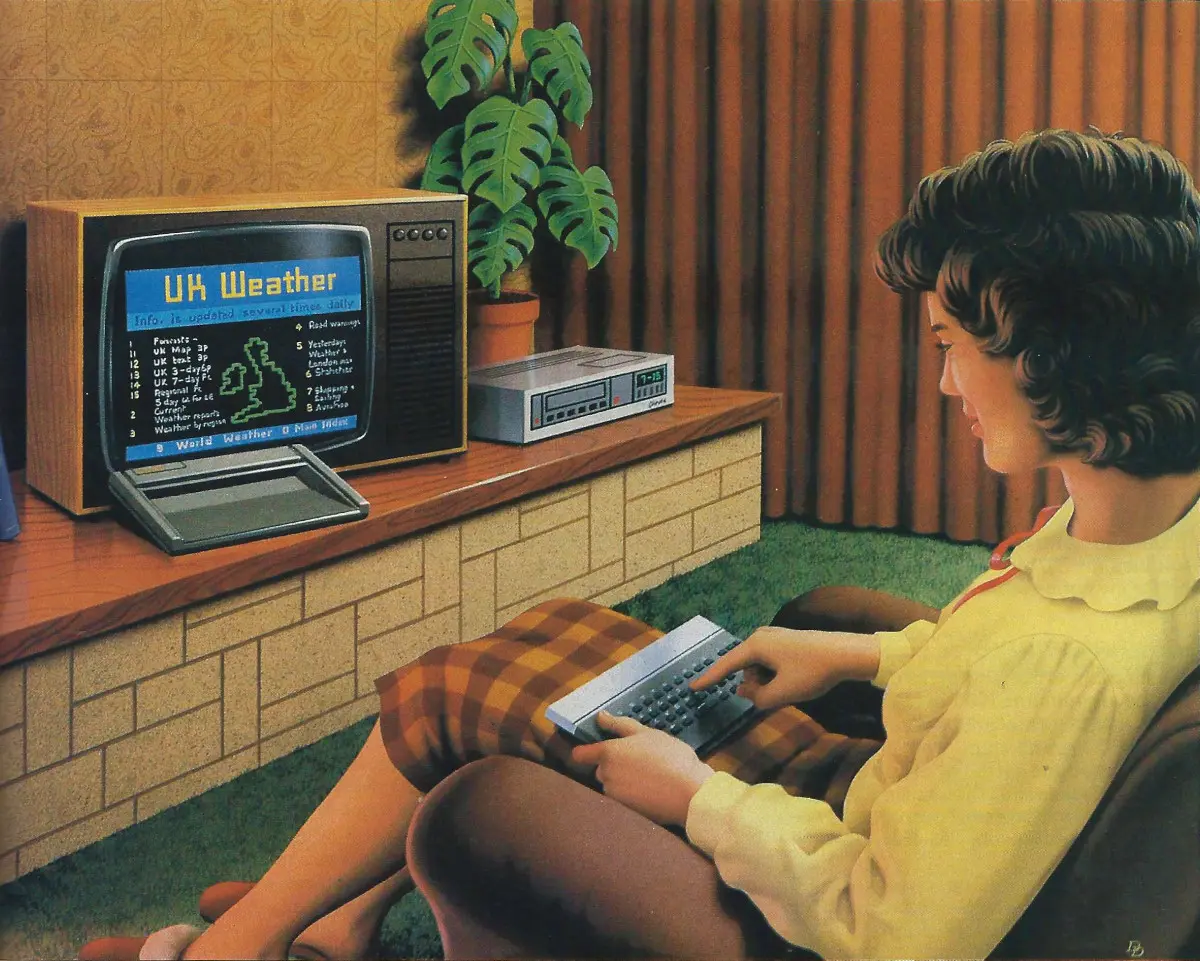
Tandata's TD1400 Homedeck in action, in an artist's impression from Personal Computer World, March 1984
According to NBS's assistant general manager Mike Fitzsimons, the plan for the Homelink on-line banking service had kicked off as far back as 1975. Although NBS had already "put a lot of thought" in to the service, the arrival of Prestel was the real catalyst.
This benefitted Prestel as it was desperate to get in to the consumer market beyond the modest numbers of early-adopter business and trades users it had been getting[2].
One of the other abilities of Homelink was mentioned and also featured in an advert for the service in March 1984's Personal Computer World: electronic auctions[3].
Pre-dating eBay by over a decade, the world's first online electronic auctions included such randomness as a £48 Christmas food hamper going for £35.51 and a blue Spruce tree, worth £100 but bagged for £32, and just like eBay, a registered bid was binding.
There was also home shopping, with companies like HL London Supermarche promising next-day delivery within a five-mile radius of Big Ben if an order was placed before 5.30pm on any weekday. Over 600 products were planned and delivery was even free.
It was also possible to buy posh knickers and booze, as well as electricals from Telefusion and Comet[4].
After Sinclair was unexpectedly sold to Amstrad in the spring of 1985, Alan Sugar's company dropped the ill-fated QL - the 68008-based micro that had helped sink Sinclair thanks to its poor sales.
Tandata stepped in to rescue QL owners who wanted to get online when it bought the remaining stocks of Sinclair's QCom QL modem. The QCom modem had actually been manufactured by OE Limited, but OEL had gone into receivership in March 1985 thanks to unpaid debts left by the collapse of one-time Sinclair distributor Prism and, incestuously, Oric.
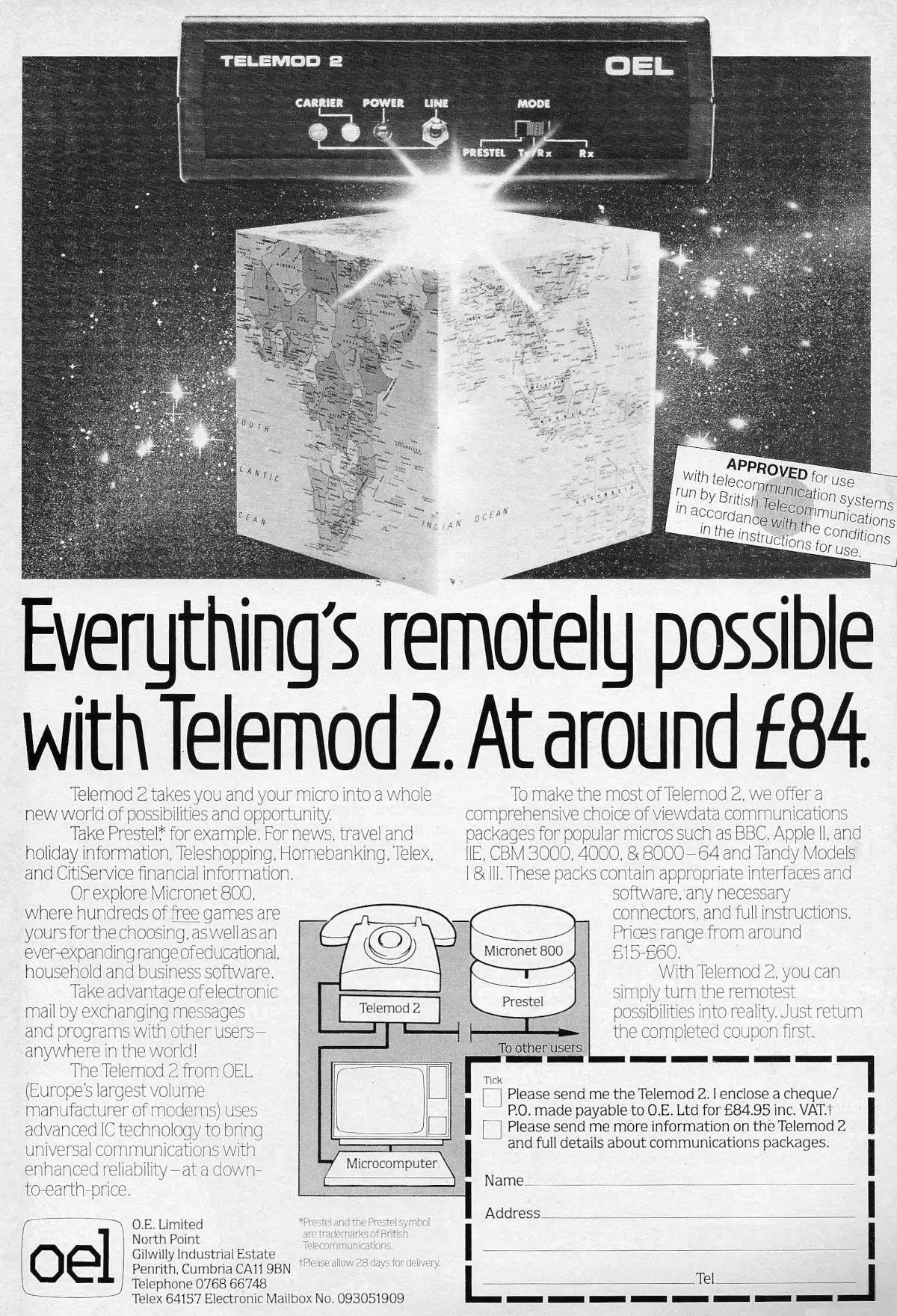
The Telemod 2 modem from OEL of Penrith, Cumbria - quite a bargain at only £84, or about £350 in 2025. Software and interfaces were extra though, with prices from £15 - £60
Tandata had also taken on the rights to product the QCom software package as well as the rights to sell Scicon's communications software as bundled with the modem.
The arcane approval process for telecomms equipment connected to the phone network meant however that Tandata was faced with getting new approval for the QCom, although a spokesperson reckoned that although the process had been "put in abeyance when OEL called in the receiver", it shouldn't take too long as "the product only needs its approval number to be given".
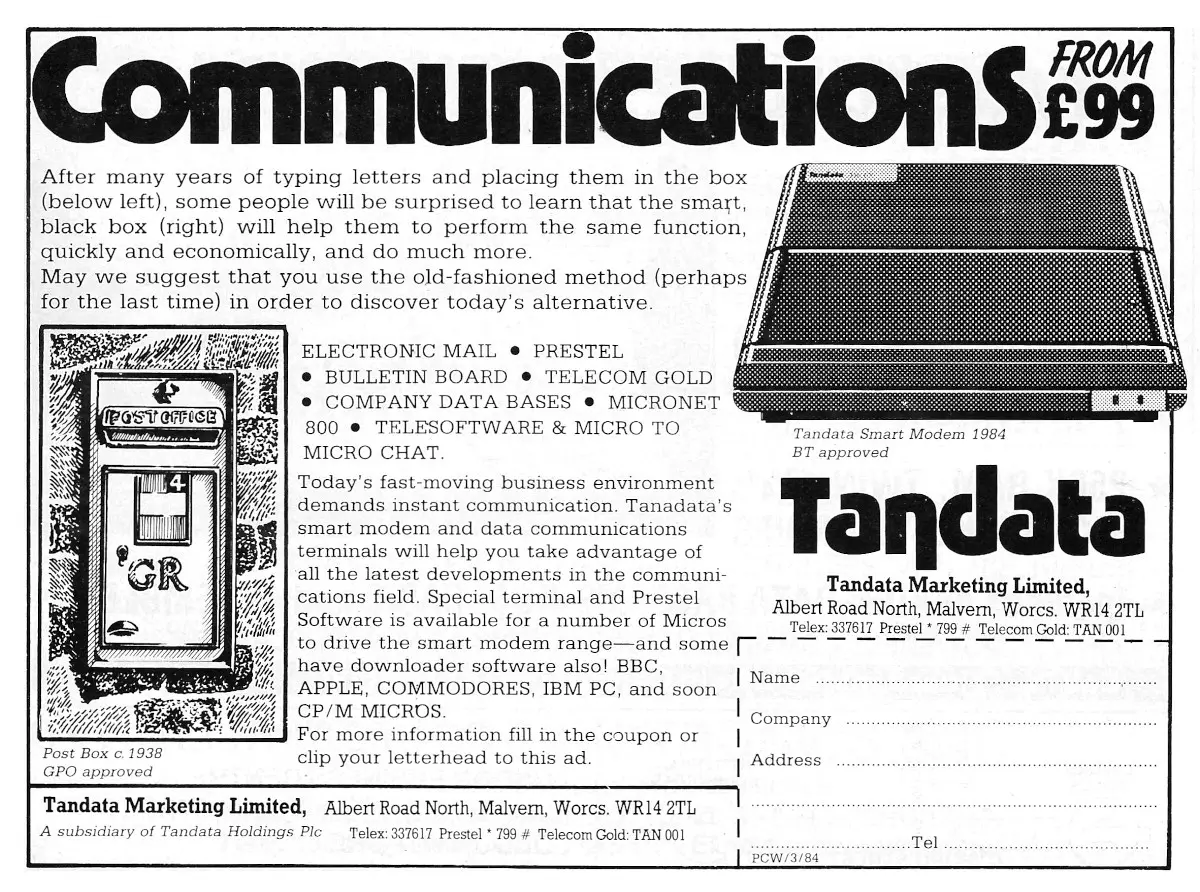
Tandata's Smart Modem, possibly either an artists impression, or its first model, as there's no model number. From Personal Computer World, March 1984
Tandata was however keen to point out that it hadn't bought any other products that OEL had been manufacturing, including Prism's well-respected VTX5000 modem for the Spectrum or a Teletext adapter due to be supplied to Channel 4[5].
Tandata was still around in 1986 when it received a useful boost thanks to the Department of Trade and Industry, which bunged in £1 million to buy modems for middle and secondary schools.
A little like the DTI's previous MISS (Micros in Secondary Schools) project, but for on-line-ness, the cash would allow schools to buy either a Tandata 512 or Dacom 2123 AD modem in order to access the DTI's new National Educational Resource Information Service (NERIS), which was due later in '86.
Perhaps not expecting such a unanimous take-up as had happened for the previous micro schemes, which had seen a computer in virtually every primary and secondary school in the country, a DTI spokesman suggested that once it had guaranteed a modem for every secondary, "any that are left over will go to independent schools and teacher training centres"[6].
Tandata became AB Tandata Limited in April 1990 after having been acquired by AB Electronics of South Wales - the company that built the BBC Micro, amongst others. By 2008 it appears to have morphed into a company providing transport information systems[7].
Date created: 11 July 2014
Last updated: 11 December 2024
Hint: use left and right cursor keys to navigate between adverts.
Sources
Text and otherwise-uncredited photos © nosher.net 2025. Dollar/GBP conversions, where used, assume $1.50 to £1. "Now" prices are calculated dynamically using average RPI per year.
